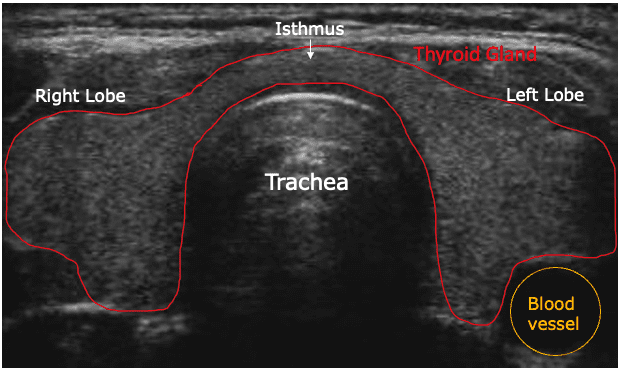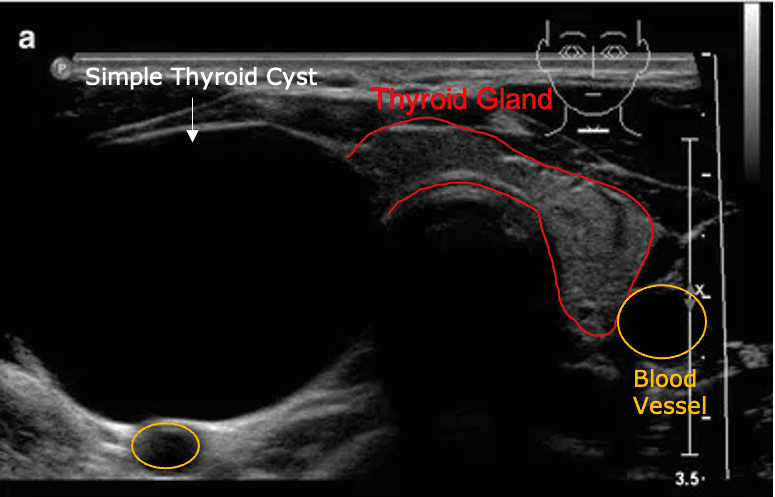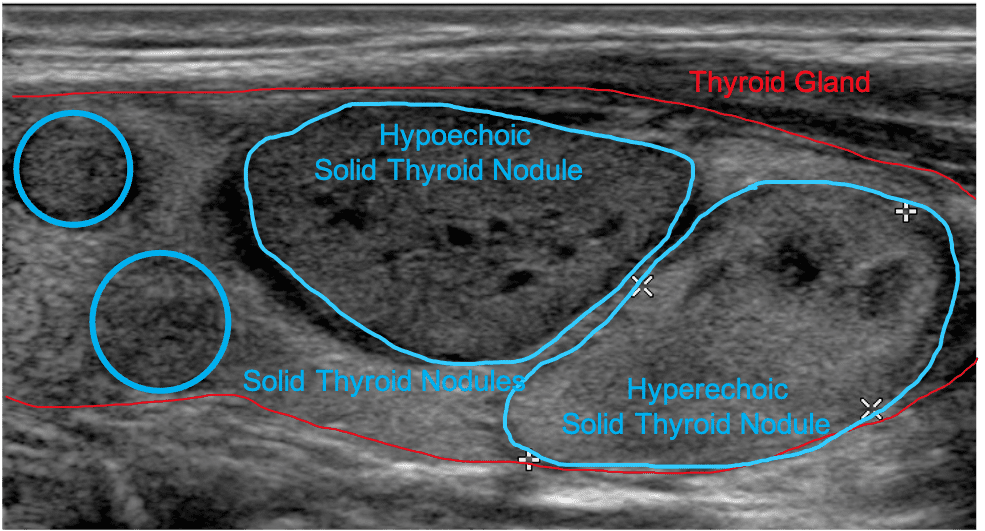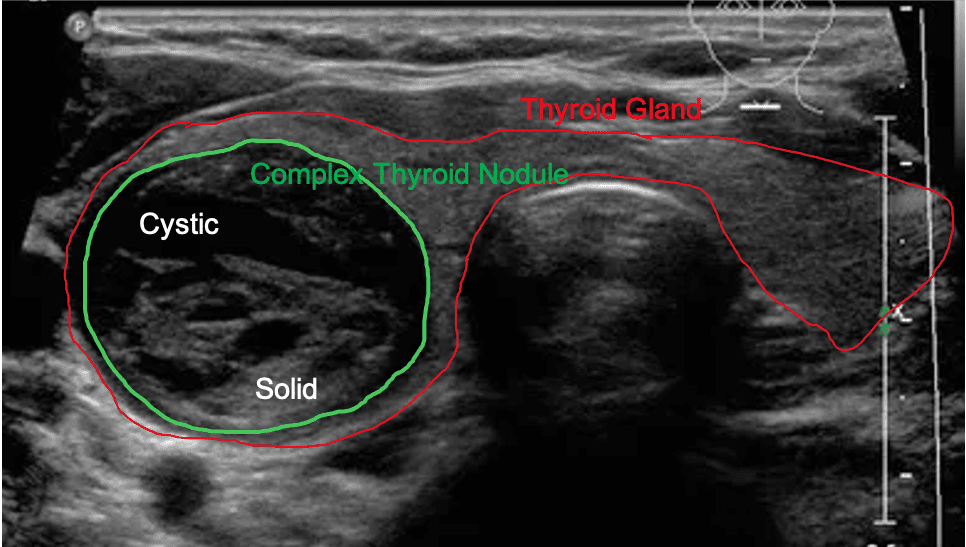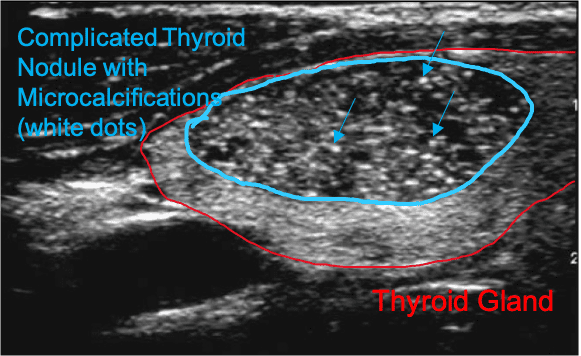You’ve made it to the final episode of the Thyroid Ultrasound Trilogy! Give yourself a pat on the back. In this article, we will guide you through some basic sonographic features of your thyroid on ultrasound. The thyroid gland belongs to the endocrine family. It is responsible for the production of thyroid hormones to maintain essential bodily functions. The thyroid is situated in the anteroinferior (front and lower) part of the neck, just below your larynx (Adam’s apple). It consists of right and left lobes located along either side of the trachea (windpipe). The two lobes are connected by a narrow bridge of tissue called the isthmus, across the midline, draping over the anterior tracheal wall. The parathyroid glands, usually four in number, lie on the posterior side of the (on the back) thyroid gland, two on each side.

Thyroid Ultrasound Trilogy – II: Common Ultrasound Terms You Might Encounter
Back to blog Previously, we explored the basic physics that powers thyroid ultrasound. In this article, we are going to guide you through some common ultrasound terminologies you might encounter in your thyroid treatment journey.

